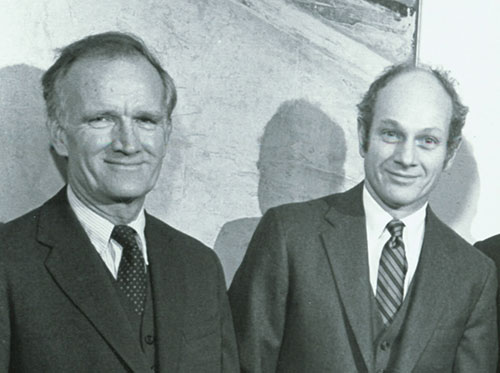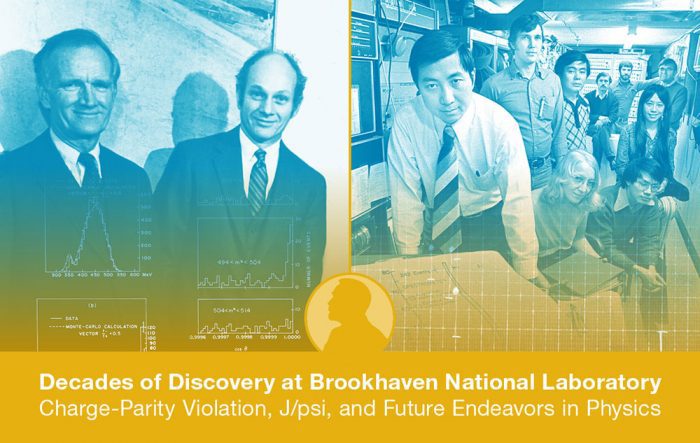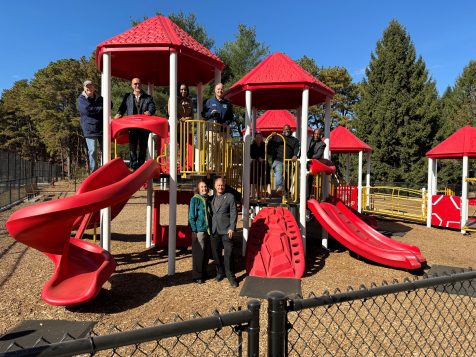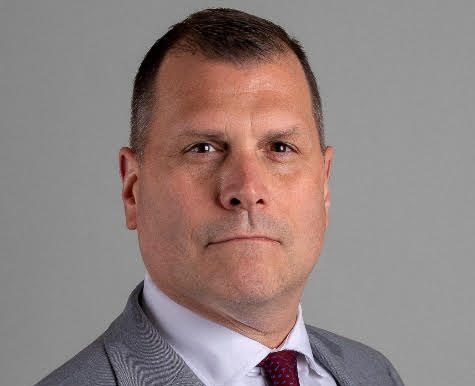At the U.S. Department of Energy’s (DOE) Brookhaven National Laboratory, scientists make history while expanding the frontiers of discovery.
Brookhaven Lab will host a celebration for the milestone anniversaries of two Nobel Prize-winning discoveries — as well as future explorations in physics. This symposium will be held at Brookhaven Lab on Friday, Nov. 22, from 1 to 6 p.m. EST in Berkner Hall.
The event, titled “Decades of Discovery at Brookhaven National Laboratory: Charge-Parity Violation, J/psi, and Future Endeavors in Physics,” is free and open to the public. Visitors to the Laboratory ages 16 and older must bring valid, government-issued photo ID. Digital IDs and copies cannot be accepted.
Those who can’t join in person may attend virtually.
Whether participating in person or virtually, attendees are asked to register as soon as possible.
About the event
This symposium will feature talks on the discoveries of charge-parity (CP) violation, the J/psi particle, and their impacts on physics research.
“Physicists study particles to unlock mysteries of how the universe works,” said JoAnne Hewett, director of Brookhaven Lab, theoretical physicist, and a featured speaker at the event. “As we celebrate and build on these discoveries, we look ahead to experiments around the world, including the future Electron-Ion Collider, which will use the J/psi for precise measurements inside the atom’s nucleus. We have questions that, today, are unanswered and will be resolved years from now.”
The event will also provide insights on current and future experiments to advance our understanding of the universe, particularly at the:
- Relativistic Heavy Ion Collider, a DOE Office of Science user facility for nuclear physics research at Brookhaven Lab
- Large Hadron Collider, located at CERN, the European Organization for Nuclear Research
- Belle II at SuperKEKB, which is at KEK, the High Energy Accelerator Research Organization in Japan
- Deep Underground Neutrino Experiment, an experiment that will span from DOE’s Fermi National Accelerator Laboratory in Illinois to the Sanford Underground Research Facility in South Dakota
The list of speakers scheduled to present — including Hewett, Nobel Laureate Samuel Ting, distinguished physicist Martin Breidenbach, former Brookhaven Lab Director Nicholas Samios, historian Robert Crease, and others — is available here.
Refreshments will be served for those who attend in person. The symposium will conclude with a toast to discovery science’s past, present, and future.
About the Nobel Prize-winning discoveries
 enlargeFrom left: Nobel Laureates Val Fitch and James Cronin
enlargeFrom left: Nobel Laureates Val Fitch and James Cronin
60 years since CP violation discovery: This occurred at Brookhaven Lab in 1964, when Val Fitch and James Cronin led a team that discovered a violation of charge conjugation (C) and parity (P) — called “CP violation” — in an experiment at the Alternating Gradient Synchrotron (AGS). Fitch and Cronin were presented with the Nobel Prize in Physics in 1980.
 enlargeNobel Laureates Samuel C.C. Ting (front) with collaborators
enlargeNobel Laureates Samuel C.C. Ting (front) with collaborators
50 years since J/psi discovery: This occurred in 1974, when the J/psi particle was discovered by teams at both Brookhaven Lab and the Stanford Linear Accelerator Center (SLAC), which today is DOE’s SLAC National Accelerator Laboratory. Samuel C.C. Ting and his team discovered what he called the “J” particle using the AGS at Brookhaven. Burton Richter and his team found the same particle, which he called the “psi,” at SLAC. Ting and Richter shared the Nobel prize for Physics in 1976.
These discoveries are two among seven recognized with the Nobel Prize at Brookhaven Lab.
SLAC is also hosting an event to celebrate discovery of the J/psi particle. That symposium will be held on Friday, Nov. 8. For more information, visit the event webpage.
Brookhaven National Laboratory is supported by the Office of Science of the U.S. Department of Energy. The Office of Science is the single largest supporter of basic research in the physical sciences in the United States and is working to address some of the most pressing challenges of our time. For more information, visit science.energy.gov.




















